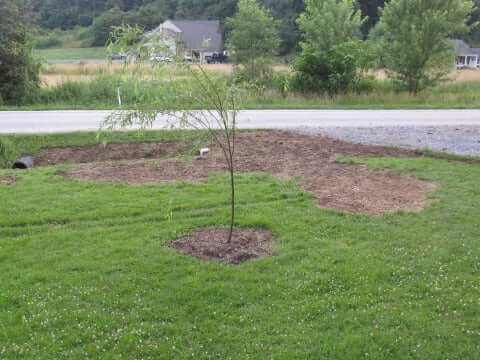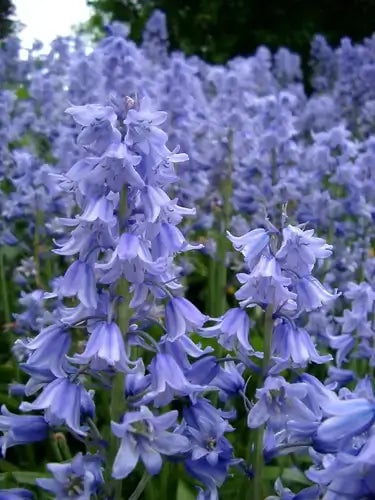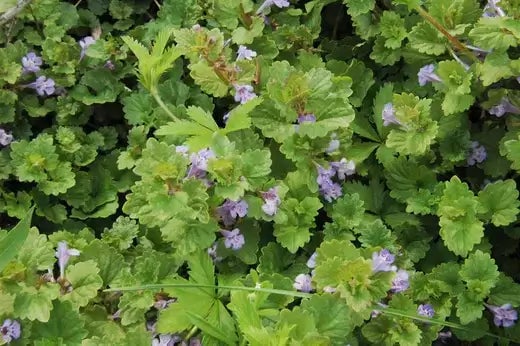History and Background on Creeping Charlie
Glechoma hederacea (fancy name for Creeping Charlie) is an aromatic, perennial, evergreen creeper of the mint family.
Its alias is ground-ivy, gill-over-the-ground, or Creeping Charlie. In many countries, it enjoys the pleasure of being used as a tasty salad green and, additionally, it has been reported to have numerous medicinal uses.
European settlers were responsible for its introduction to a wide area of localities. Although Creeping Charlie is native to Europe and southwestern Asia, it has become common in most regions other than the Rocky Mountains. Known as Creeping Charlie, its aliases are Alehoof, Cats for, Field Balm, Run-away-robin, Ground Ivy, gill-over-the-ground, and Tunhoof. Its round can identify it as reniform (kidney or fan shape of the leaf). It is a variable species, its size being influenced by environmental impacts.
The flowers of Creeping Charlie are bilaterally symmetrical, funnel-shaped, blue, or bluish-violet to lavender, growing in opposite clusters of 2 - 3 flowers. It usually flowers in the spring.
How to Use Creeping Charlie in Your Landscape Design
Glechoma thrives in moist, shaded areas but also tolerates sun very well. It is a common plant in grasslands and wooded areas or wasteland. It also thrives on lawns and around buildings since it survives mowing. To prevent its spread, bagging your lawn cuttings will help combat its spread by stolon's or by seed.
Part of the reason for its widespread is this rhizomatous method of reproduction. It will form dense mats which can take over areas of the lawn and thus can be considered a potentially invasive or aggressive weed.[1]
Now that we have explored the evil side of one of Mother Nature's children, let us see if there is any good. Remember, for every negative. There must be a positive. This is the balance of life. CC is quite attractive and can be grown as a potted plant and, on occasion, as a ground cover. Easily cultivated, it grows well in the shaded area. While many of us consider it a weed because of its propensity for spreading,
Culinary and Medicinal Uses for Creeping Charlie
Creeping Charlie has culinary and medicinal uses, which is why the earlier settlers brought it to America. The fresh herb can be rinsed and steeped in hot water to create an herbal tea rich in vitamin C. Before the introduction of hops for these purposes, Creeping Charlie was also widely used by the Saxons in brewing beer as flavoring, clarification, and preservative; thus, the brewing-related names, Alehoof, Tunhoof, and Gill-over-the-ground.
Creeping Charles has been used in the traditional medicine of Europe going back thousands of years. Galen, an ancient Greek physician, 300AD, recommended the plant to treat inflammation of the eyes. John Gerard, an English herbalist, recommended the plant to treat tinnitus as a diuretic, astringent, tonic, and gentle stimulant. Creeping Charlie has been used in the traditional medicine of Europe for thous:nds of years.
The Benefits of Creeping Charlie and How to Best Care for It
Creeping Charlie (Glechoma hederacea), known as ground ivy, is a low-growing perennial plant, but most people treat it as a weed. Most gardeners and homeowners consider this plant invasive, yet it has several unexpected advantages. You can maintain a healthy Creeping Charlie population in your garden without letting it dominate by learning proper care techniques.
Creeping Charlie stands out for its rapid and effective ground coverage capabilities. Its fast growth makes it a perfect choice for covering ground in challenging environments where other plants struggle. The dense leaf mat restricts weed growth and moistens the soil by shading the earth, benefiting regions with erosion risks or hard-to-plant slopes.
Creeping Charlie functions as a magnet for pollinating bees. The plant produces small violet flowers in spring that release a delicate scent that attracts numerous beneficial insects. Improved pollination and biodiversity strengthen your garden ecosystem as a result. Historically, people used Creeping Charlie’s leaves and stems to create medicinal teas and other traditional treatments. People continue gathering leaves to create gentle herbal drinks to assist the digestive and respiratory systems.
Creeping Charlie requires careful management because its rapid spread makes it attractive and problematic. When cultivating this plant, you must establish a confined area where it can spread. Using raised beds with barriers or border planting will help control Creeping Charlie from spreading into unwanted areas. Control the spread of new runners by trimming them back during early spring and late summer when growth becomes most vigorous. Creeping Charlie thrives best when grown under conditions that provide partial shade. The plant withstands full sunlight but flourishes better in places where it gets morning or afternoon sunlight while shielding from harsh midday rays.
Established Creeping Charlie requires a little additional watering. Maintain the soil at the proper moisture level during the first growth stages but ensure it never becomes saturated. The risk of diseases and root rot demands proper soil drainage to avoid overwatering. Rainfall typically provides enough moisture for plants, but additional watering during dry spells will help preserve healthy green foliage.
Fertilizing Creeping Charlie is seldom necessary. If growth becomes noticeably slow or the leaves develop a yellow tint, a balanced all-purpose fertilizer applied lightly will help support the plant. Over-fertilizing Creeping Charlie can lead to excessive spreading that affects nearby plants.
Creeping Charlie is commonly labeled a weed, but it serves essential functions as ground cover and weed suppressor while supporting pollinators and possibly offering medicinal properties. You can benefit from this plant through controlled growth measures and proper environmental conditions while preventing it from taking over your garden space.
Read more

Newly transplanted trees require much care and maintenance to recover from the transplanting shock.Post-planting care and maintenance are crucial for the tree as it has to establish itself in a new...

The Bluebells are among the popular perennial herbs to consider for your garden.It produces unique blue bell-shaped blooms, which gives the herb its most common name. The bulbs stay planted in the ...


